
Filter News
Area of Research
News Type
News Topics
- (-) Advanced Reactors (12)
- (-) Clean Water (16)
- (-) Cybersecurity (14)
- (-) Fusion (38)
- (-) Hydropower (6)
- (-) Isotopes (33)
- (-) Machine Learning (37)
- (-) Space Exploration (13)
- 3-D Printing/Advanced Manufacturing (56)
- Artificial Intelligence (77)
- Big Data (45)
- Bioenergy (68)
- Biology (80)
- Biomedical (42)
- Biotechnology (25)
- Buildings (30)
- Chemical Sciences (35)
- Composites (11)
- Computer Science (111)
- Coronavirus (19)
- Critical Materials (5)
- Education (2)
- Emergency (3)
- Energy Storage (32)
- Environment (116)
- Exascale Computing (51)
- Fossil Energy (6)
- Frontier (44)
- Grid (32)
- High-Performance Computing (81)
- ITER (4)
- Materials (51)
- Materials Science (55)
- Mathematics (8)
- Mercury (7)
- Microelectronics (3)
- Microscopy (23)
- Molten Salt (2)
- Nanotechnology (17)
- National Security (60)
- Neutron Science (82)
- Nuclear Energy (66)
- Partnerships (36)
- Physics (34)
- Polymers (9)
- Quantum Computing (35)
- Quantum Science (48)
- Security (16)
- Simulation (42)
- Software (1)
- Statistics (2)
- Summit (40)
- Transportation (30)
Media Contacts
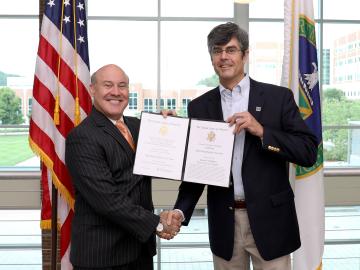
A 25-year career with the U.S. Navy, commanding combat missions overseas, brought Tom Kollie back to where he came from — ready to serve his country in a new way.

Moving to landlocked Tennessee isn’t an obvious choice for most scientists with new doctorate degrees in coastal oceanography.

As a medical isotope, thorium-228 has a lot of potential — and Oak Ridge National Laboratory produces a lot.
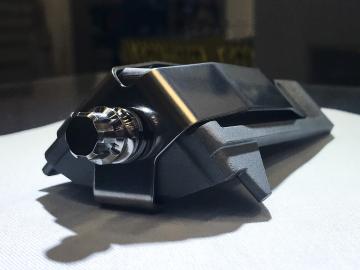
Four first-of-a-kind 3D-printed fuel assembly brackets, produced at the Department of Energy’s Manufacturing Demonstration Facility at Oak Ridge National Laboratory, have been installed and are now under routine operating

In the mid-1980s, Balendra Sutharshan moved to Canada from the island nation of Sri Lanka. That move set Sutharshan on a path that had him heading continent-spanning collaborations and holding leadership posts at multiple Department of Energy
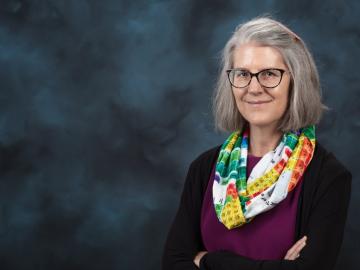
Deborah Frincke, one of the nation’s preeminent computer scientists and cybersecurity experts, serves as associate laboratory director of ORNL’s National Security Science Directorate. Credit: Carlos Jones/ORNL, U.S. Dept. of Energy
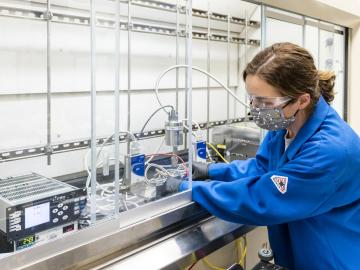
For years Brenda Smith found fulfillment working with nuclear batteries, a topic she’s been researching as a chemist at Oak Ridge National Laboratory.
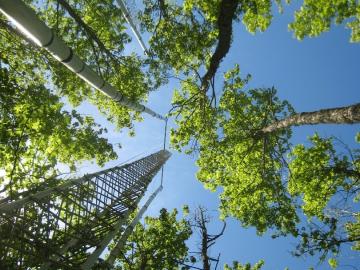
Oak Ridge National Laboratory was among an international team, led by Lawrence Livermore National Laboratory, who synthesized 108 elevated carbon dioxide, or CO2, experiments performed in various ecosystems to find out how much carbon is
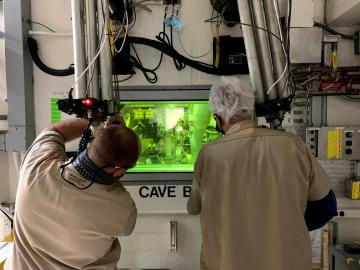
A new method developed at Oak Ridge National Laboratory proves one effort’s trash is another’s valuable isotope. One of the byproducts of the lab’s national plutonium-238 production program is promethium-147, a rare isotope used in nuclear batteries and to measure the thickness of materials.

On Feb. 18, the world will be watching as NASA’s Perseverance rover makes its final descent into Jezero Crater on the surface of Mars. Mars 2020 is the first NASA mission that uses plutonium-238 produced at the Department of Energy’s Oak Ridge National Laboratory.


